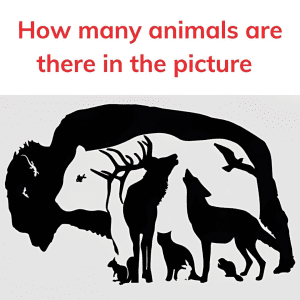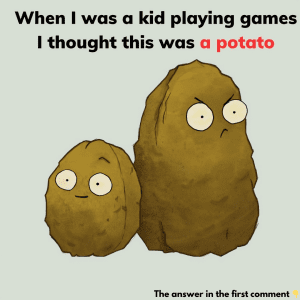Are you ready to put your observational skills to the ultimate test? This fun and brain-tickling puzzle dares you to spot five differences between two seemingly identical images. At first glance, these pictures might look like exact copies, but if you look a little closer, you’ll notice tiny details that set them apart. This type of visual puzzle is fantastic for sharpening your focus, enhancing your attention to detail, and training your mind to spot subtle variations. Ready to dive in? Let’s get started!
Why Spot-the-Difference Puzzles Are Trickier Than They Seem

These puzzles aren’t as simple as they look. Often, the differences are so subtle that it’s easy to overlook them. Here are some common pitfalls people encounter when tackling spot-the-difference puzzles:
- Rushing Through the Images: Many people quickly scan the images, expecting to spot differences right away. However, this method often leads to missed details. These puzzles require a slower, more methodical approach.
- Ignoring Small Details: The variations in these puzzles can be as small as a missing line, a different color, or a tiny alteration in shape. When you’re not paying close attention, it’s easy to skip over these slight changes.
- Expecting Obvious Differences: Not all differences jump out at you. Sometimes, they’re cleverly hidden to test your focus, making them tricky to spot. This is why it’s important to be patient and give each area of the image a thorough inspection.
Let’s Find the Differences One by One
Ready to solve this puzzle? Here’s a step-by-step breakdown of each difference. Remember to look at each part of the image carefully and compare one section at a time.
Difference #1: The Toilet Flush Handle
Let’s start with the flush handle on the toilet. Notice that in one image, the handle faces outward, while in the other image, it’s angled slightly inward. This subtle change might be easy to miss, but it’s there!
Difference #2: A Stray Strand of Hair
Now, move on to the character’s hairstyle. If you look closely, you’ll see that in one image, the character’s hair is neat and tidy, while in the other, there’s a small strand or tuft of hair sticking out. This tiny variation is a great example of how minor changes can challenge your observation skills.
Difference #3: The Toilet Paper Rolls
Let’s take a look at the toilet paper rolls. In one image, the rolls appear slightly longer or are in different quantities compared to the other image. These small but noticeable changes are classic in spot-the-difference puzzles, and catching them requires a careful eye.
Difference #4: Wall Line Pattern
Check out the lines on the wall in the background. One image shows the lines in a continuous pattern, while the other has a broken or altered line. This is another subtle but effective way that puzzles like this one keep you on your toes.
Difference #5: Floor Tile Pattern
Finally, examine the floor tiles. In one image, you’ll notice that a tile pattern is slightly different – it could be the orientation of the tiles or even a missing square. Background changes like this are often the hardest to detect because they blend seamlessly into the overall scene.

If you managed to spot all five differences, congratulations! You’ve got a keen eye for detail. If you missed a few, no worries – you can always go back and give it another try. Spot-the-difference puzzles can be tricky, but with patience, you can uncover even the smallest discrepancies.
Want to get better at these puzzles? Here are a few tips to sharpen your skills:
- Take It Slow: Don’t rush. Give each area of the image the attention it deserves.
- Use a Systematic Approach: Work your way through the images from top to bottom or left to right, focusing on one section at a time.
- Compare Sections Directly: Place the two images side by side and look at each area carefully. Direct comparison makes it easier to spot variations.
- Look for Common Changes: Be aware of frequently altered elements like colors, lines, and shapes, as these are often targeted in spot-the-difference puzzles.
Spot-the-difference puzzles are not just entertaining – they’re a great way to exercise your mind. They improve focus, enhance visual perception, and boost memory, all while offering a fun mental workout. So, next time you’re looking for a quick brain exercise, consider tackling a visual puzzle like this one. And if you enjoyed this challenge, there are plenty of other puzzles and brain teasers out there designed to keep you sharp. Happy puzzling, and remember to keep those eyes peeled!


